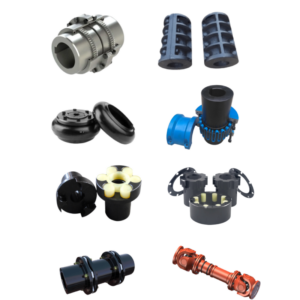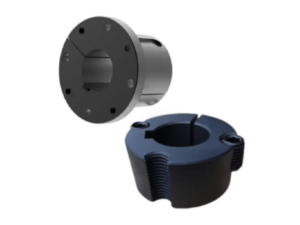The pitch of a sprocket is a critical parameter in its design and must precisely match the pitch of the corresponding chain. Below are the common universal pitch specifications and classifications:
1. Imperial Specifications (Inches)
- ANSI Standard Chains (American National Standard):
- #25 Series: 1/4″ (6.35 mm)
- #35 Series: 3/8″ (9.525 mm)
- #40 Series: 1/2″ (12.7 mm)
- #50 Series: 5/8″ (15.875 mm)
- #60 Series: 3/4″ (19.05 mm)
- #80 Series: 1″ (25.4 mm)
- #100 Series: 1.25″ (31.75 mm)
- #120 Series: 1.5″ (38.1 mm)
- #140 Series: 1.75″ (44.45 mm)
- #160 Series: 2″ (50.8 mm)
2. Metric Specifications (Millimeters)
- ISO Standard Chains (International):
- 04C Series: 4/8″ (12.7 mm, equivalent to #40)
- 06C Series: 6/8″ (15.875 mm, equivalent to #50)
- 08B Series: 8 mm (small machinery)
- 10A Series: 10 mm (industrial drives)
- 12A Series: 12.7 mm (same as #40)
- 16B Series: 16 mm (heavy-duty applications)
- 20A Series: 20 mm (high-power transmission)
- 24A Series: 24 mm (heavy machinery)
3. Other Specialized Specifications
- Miniature Chains (precision equipment):
- 3/16″ (4.76 mm), 5/32″ (3.96 mm), etc.
- Double-Pitch Chains (conveyor use):
- Such as 2040 (2×1/2″), 2050 (2×5/8″), etc., where the pitch is twice the standard.
4. Selection Considerations
- Matching the Chain: The sprocket pitch must match the chain pitch exactly; otherwise, it may cause skipping or excessive wear.
- Tooth Count Impact: Too few teeth increase vibration—recommended ≥17 teeth (≥25 for high-speed applications).
- Standard Reference: Prefer ANSI/ISO standards for interchangeability.
Example Reference Table
| Chain No. (ANSI) | Pitch (Inch) | Pitch (mm) | Metric Equivalent (ISO) |
|---|---|---|---|
| #25 | 1/4″ | 6.35 | – |
| #40 | 1/2″ | 12.7 | 12A/04C |
| #80 | 1″ | 25.4 | 24A |
In practical applications, factors such as load, speed, and environmental conditions must be considered. Always refer to manufacturer specifications for optimal performance.







